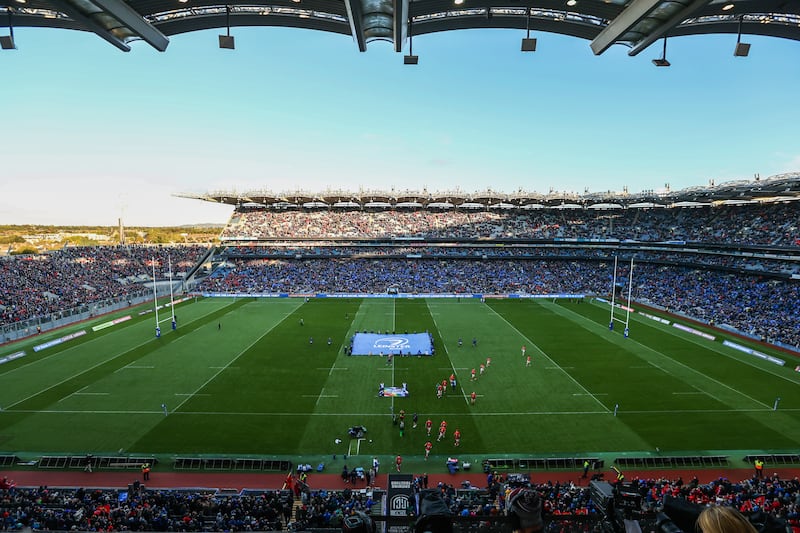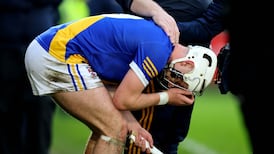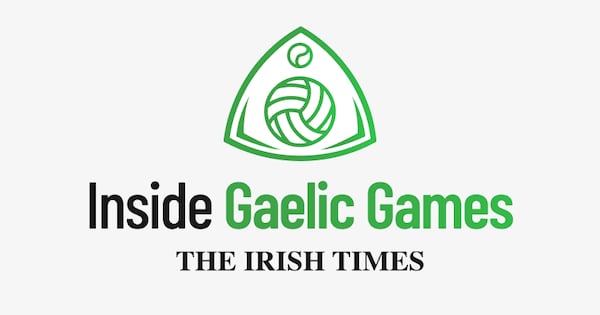At the launch of the GAA’s annual reports earlier this month two things became clear. Attendances at centrally administered matches – league and All-Ireland championship – were down, but revenues, especially from Croke Park, had essentially disguised the financial impact.
The place of gate receipts in any round-up of the GAA year has always been central. Back in the early 1990s before there was any cash-cow stadium to take up the slack, it was always argued that the association should be aiming for a 2:1 ratio between match revenue and non-match, largely commercial, income.
Earnings generally exceeded that ideal ratio as the turnstiles took in amounts that frequently hit 70 per cent and more.
Once Croke Park began to generate significantly greater income that all changed. Increasing media rights have also fed into commercial earnings even if they have stalled a little of late.
READ MORE
In fact the ratio swung to the other extreme and in 2010 when he was the GAA’s finance manager, current CEO Tom Ryan warned that the annual figures had continued to head in the wrong direction as regards the proportion of revenue that was coming from gate receipts.
The previous year he had said that the ideal proportion was 2:1, gate income to other sources, but that the GAA was heading in the other direction with just 38 per cent of the previous year’s earnings coming from attendances.
“I’m concerned about gate receipts even though commercial revenues continue to insulate us but I’m concerned about the absolute value of gate receipts,” he said at the launch of that year’s financial report, “rather than that our commercial earnings are high.
“It’s the third year that gates have gone down and although there is no immediate impact on commercial income obviously if fewer people are attending the games and that reflects a falling interest then there will be a knock-on effect on revenues such as sponsorship and media.”
This year’s report indicated that gate receipts accounted for just 29 per cent of the GAA’s sources of income.
It was accepted by the association’s director of finance Ger Mulryan that although gate receipts were marginally up to €39.14 million from €38.45 million, it was on account of increased admission prices. “Yeah, that’s a fair statement. I suppose they marginally increased on the back of the ticket price increase.”
Attendances between league and championship and other events run by Central Council’s in fact fell by 10 per cent.

Securing attendances has always been regarded as something of a providential task given how dependent match revenue is on the attractiveness of fixtures, which in turn relies on certain counties being involved, for instance Cork’s hurlers. But there has equally been a detectible downturn in attendances, especially in football.
The slightly embarrassing fact for the GAA is that the Leinster rugby team had more full houses at Croke Park last year than any football county. This was despite the most open championship in an age where the outsiders going into the All-Ireland semi-finals, Armagh, ended up taking home Sam Maguire.
Yes, there was a Dublin-sized hole in the semi-finals for the first time in 15 years but the Dubs’ support has been waning. Their quarter-final against Galway attracted fewer than 50,000, and the Leinster final for a second year against Louth drew around half the previous year’s crowd.
That 2023 match had turned out a turkey shoot and maybe that dissuaded Louth supporters despite the county having established itself as the genuine second team in the province, a verdict copper-fastened by the team’s competitiveness in last year’s provincial final.
The view within the county was, however, that the upcoming All-Ireland group match against Meath would be the one to target, as victory – duly achieved – progressed them to the knock-out stages of the championship.
The FRC focused on improving football as a spectacle but the game’s competitive structures are at least as off-putting a problem for supporters.
Two of the provincial championships are now dysfunctional and for all the sturm und drang of the Munster hurling championship, which proves that high-quality competitive matches will pull in the crowds, its Leinster equivalent, despite some exciting finales, lacks atmosphere unless Wexford are going well.
Interest in the championship has also been challenged in the broadcasting medium. Previously dominant in terms of sports ratings, Gaelic games have begun to struggle to maintain that status.
It has always been the case that Ireland’s presence in major international sports tournaments has accessed television audiences normally beyond the GAA’s reach but more run-of-the-mill events, particularly in rugby, are now filling out the top 10 annual sports broadcasts.
For the past three years only the All-Ireland finals have featured in that list and in just one year was the football final the most watched sports event of the preceding 12 months
To get an indication of the trajectory go back to 2003 and not alone were four GAA fixtures in the top 10 but three of them were in the top four – that year’s Special Olympics opening ceremony was top of the list.
The point of contemporary relevance is that despite having a Grand Slam decider against England in Lansdowne Road, Ireland’s rugby team came in at just sixth place in that year’s ratings behind the football and hurling finals as well as the Kilkenny-Tipperary semi-final.
For the past two years rugby internationals have topped the list in Ireland. It may be that the success of Irish rugby, as the main driver of these audiences, is not indefinitely sustainable, but that’s actually been said for quite a while at this stage.
The GAA needs sustainable competition to continue to hold even its traditional audience.
















